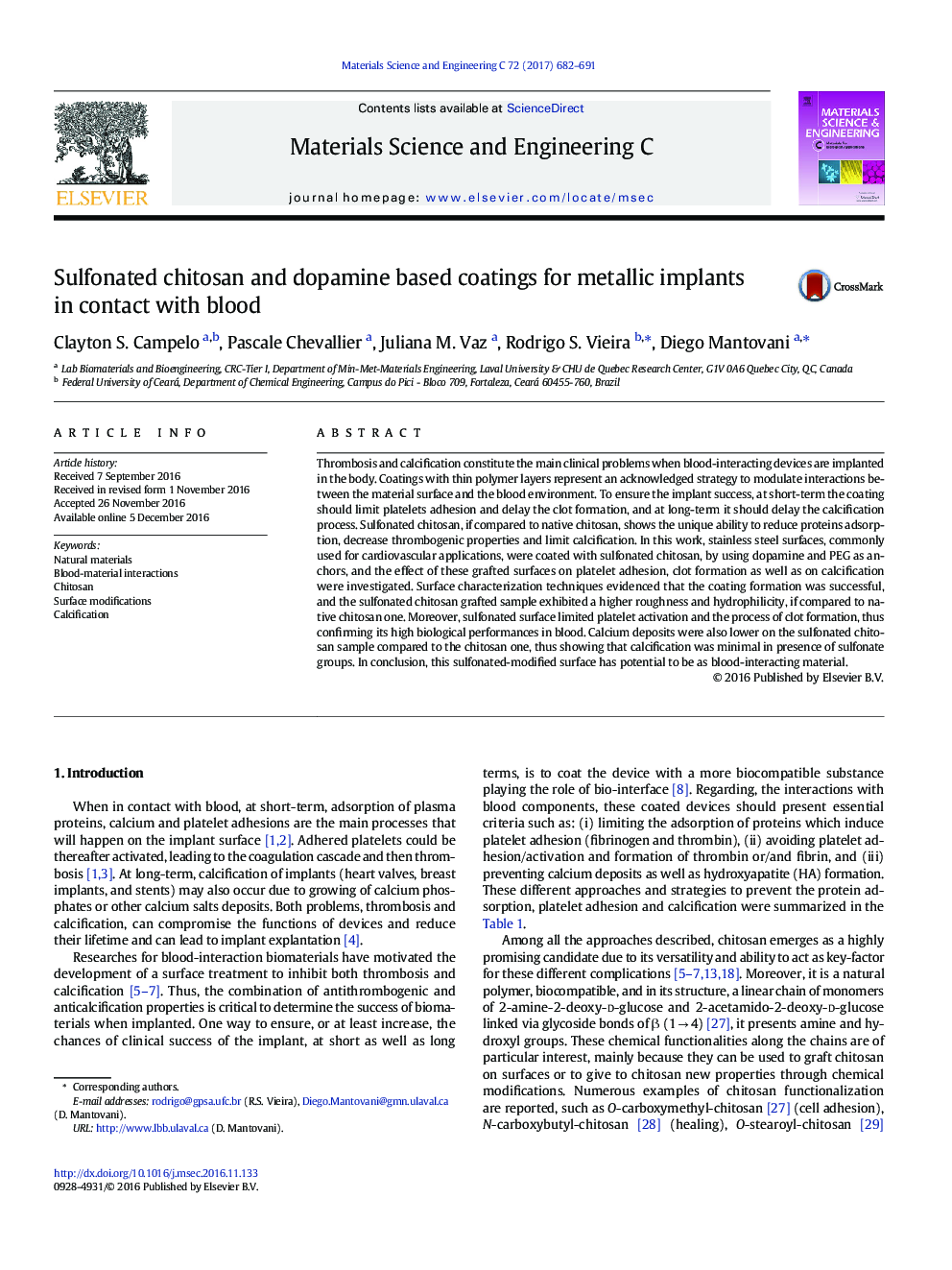| Article ID | Journal | Published Year | Pages | File Type |
|---|---|---|---|---|
| 5435251 | Materials Science and Engineering: C | 2017 | 10 Pages |
â¢Thrombosis and calcification constitute the main clinical problems when blood-interacting devices are implanted in the body.â¢Thin layer polymer coatings represent an acknowledged strategy to modulate surface interactions between material and blood.â¢Native and sulfonated chitosans were covalently grafted on metallic devices by using dopamine and PEG as anchors.â¢Sulfonated chitosan limited platelet activation and the process of clot formation, and minimized the calcification.
Thrombosis and calcification constitute the main clinical problems when blood-interacting devices are implanted in the body. Coatings with thin polymer layers represent an acknowledged strategy to modulate interactions between the material surface and the blood environment. To ensure the implant success, at short-term the coating should limit platelets adhesion and delay the clot formation, and at long-term it should delay the calcification process. Sulfonated chitosan, if compared to native chitosan, shows the unique ability to reduce proteins adsorption, decrease thrombogenic properties and limit calcification. In this work, stainless steel surfaces, commonly used for cardiovascular applications, were coated with sulfonated chitosan, by using dopamine and PEG as anchors, and the effect of these grafted surfaces on platelet adhesion, clot formation as well as on calcification were investigated. Surface characterization techniques evidenced that the coating formation was successful, and the sulfonated chitosan grafted sample exhibited a higher roughness and hydrophilicity, if compared to native chitosan one. Moreover, sulfonated surface limited platelet activation and the process of clot formation, thus confirming its high biological performances in blood. Calcium deposits were also lower on the sulfonated chitosan sample compared to the chitosan one, thus showing that calcification was minimal in presence of sulfonate groups. In conclusion, this sulfonated-modified surface has potential to be as blood-interacting material.
